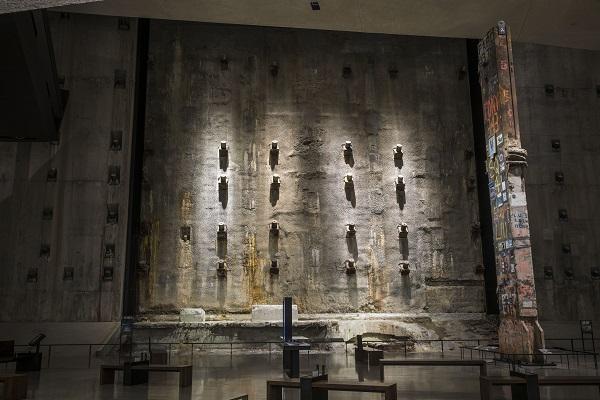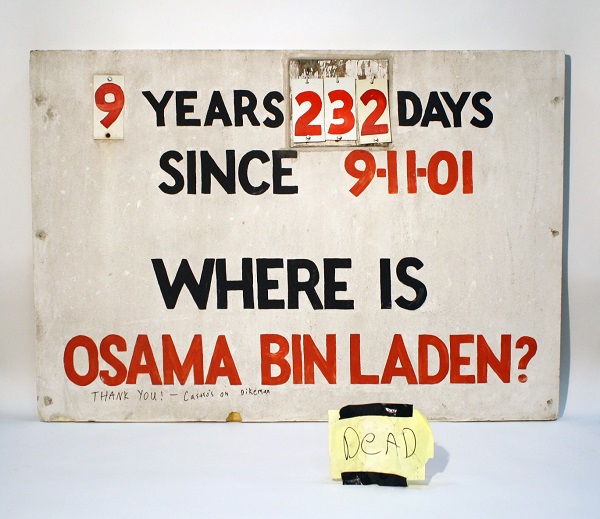Make a donation to the museum
Public Program at the 9/11 Memorial Museum to Highlight Unique History of the Slurry Wall
Public Program at the 9/11 Memorial Museum to Highlight Unique History of the Slurry Wall

On Monday, May 6, the 9/11 Memorial & Museum will host a panel discussion between Harriet Senie, Ken Lustbader and Peter Rinaldi about the history and cultural significance of the World Trade Center slurry wall. The discussion will be preceded by a preview of a new short documentary, “Memory Foundations: The Story of the Slurry Wall.”
As an innovative feat of engineering and construction, the slurry wall was a marvel of its time. This great subterranean wall surrounded the WTC site and was a barrier that held back the waters of the Hudson River thus allowing for the construction of what were at the time the two largest towers in the world.
When the Twin Towers collapsed on September 11, 2001, there was a concern that the damaged slurry wall would fail, resulting in catastrophic flooding of lower Manhattan and the subways. But despite considerable damage, the slurry wall was resilient. Engineers and construction workers took measures to stabilize the wall and ensure the safety of the site and those working there.
In spring 2002, as Ground Zero was finally cleared of debris, one could again see “the Bathtub,” a 70-foot-deep wall holding the site together. As Daniel Libeskind, the master planner of the new World Trade Center site, later observed, “The foundations withstood the unimaginable trauma of the destruction and stand as eloquent as the Constitution itself asserting the durability of democracy and the value of individual life.”
In celebration of National Historic Preservation Month, the panelists of “Holding Back the Hudson” will discuss the unique history of the slurry wall and examine how historical events and collective memory can transform places and objects from the mundane to the monumental.
Harriet F. Senie is professor of art history and director of the M.A. program in art history and art museum studies at City College of New York. Professor Senie has lectured and written extensively about public art, memory and material culture, and memorials. In September 2017, Professor Senie joined the Mayoral Advisory Commission on City Art, Monuments and Markers, a group that advises Mayor Bill de Blasio on issues relating to public art and historic monuments and markers. She is the author of “Memorials to Shattered Myths: Vietnam to 9/11.”
Ken Lustbader is a historic preservationist who served as the lead consultant for the Lower Manhattan Emergency Preservation Fund, a coalition of five preservation organizations that was formed in response to the September 11 attacks. In that capacity he developed and implemented a comprehensive strategy that included the preservation of in situ elements of the World Trade Center that are now integral components of the 9/11 Memorial Museum. Between 1994 and 2002, he was the director of the New York Landmarks Conservancy’s Sacred Sites Program.
Peter Rinaldi retired from the Port Authority of New York and New Jersey in 2010, after 38 years of service. After 9/11, Rinaldi was assigned as a lead member of the engineering team responsible for supervising the clean-up and providing technical support to police, fire and other emergency personnel during the rescue and recovery at the World Trade Center site. From September 2001 to June 2002, Rinaldi was at Ground Zero full time, and played a key role in stabilizing and preserving the slurry wall and other artifacts at the site.
Reserve your tickets to “Holding Back the Hudson” today. This program is made possible through generous support from American Express.
By Joe Graham-Felsen, Senior Collections & Conservation Technician, 9/11 Memorial Museum
Previous Post
Artifact Tells the Story of the Nine-Year Search for Osama bin Laden

Learn the history of the Museum’s first artifact dramatizing the historic milestone of bin Laden’s capture and death.
Next Post
Covering the 9/11 Attacks: One Reporter’s Story

Reporter Sofia Lachappelle and her Univision team would ultimately stay at Ground Zero for almost a week, eating donated food and sleeping in their news truck.